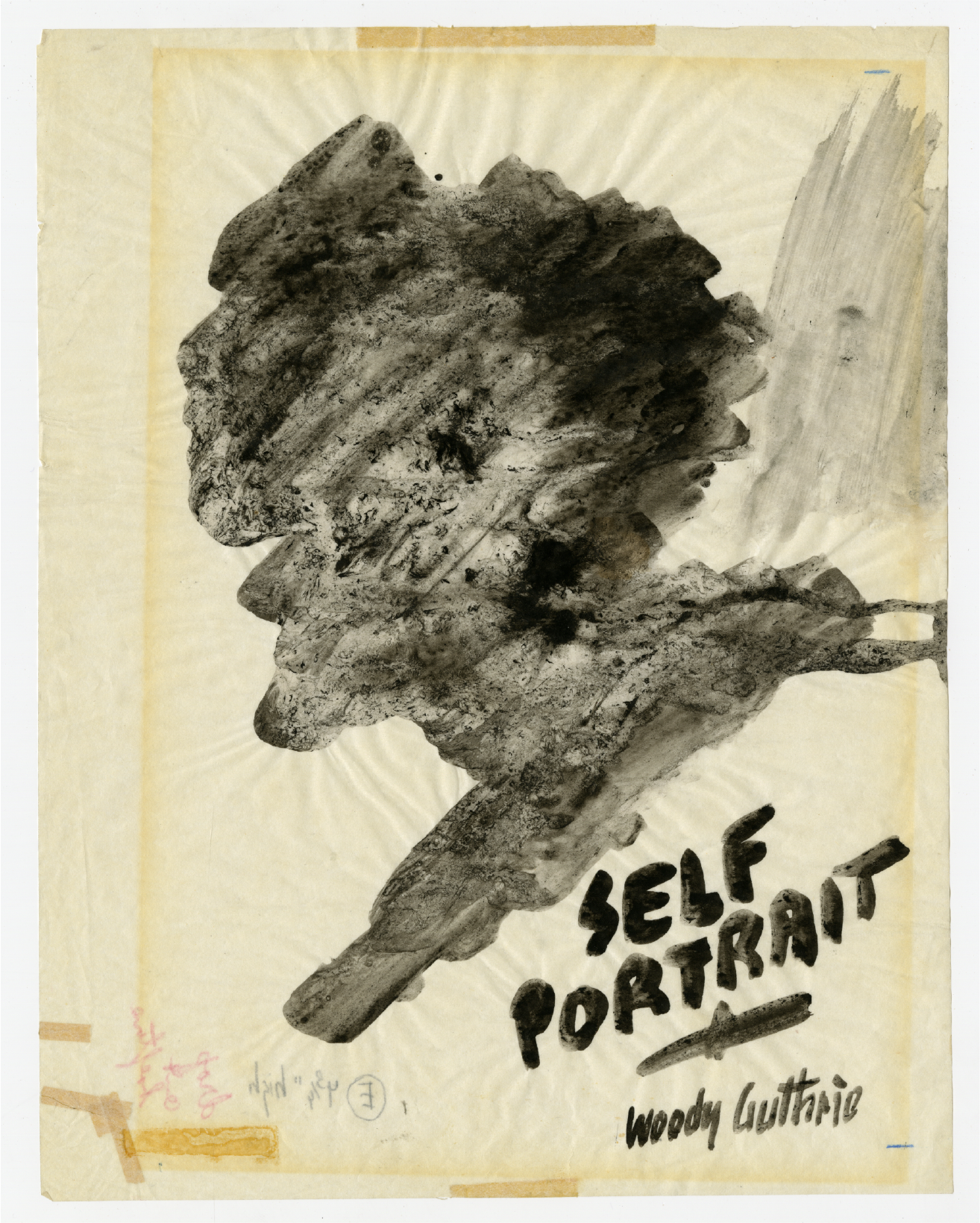Woody’s Life in Color
Woody Guthrie is known for many things and, throughout his prestigious career, he was known by many names. The most famous moniker, “The Dust Bowl Troubadour,” was appointed to Guthrie after the release of his seminal album, Dust Bowl Ballads.The songs chronicled the plight of displaced farmers in Oklahoma, known as Okies, during the Great Depression and their search for new beginnings in places out West.
He traveled along weathered midwestern highways and train lines, living among thousands of other Okies, hearing stories, and learning from their traditions. The lyrical retellings in Dust Bowl Ballads helped garner nationwide interest in the Dust Bowl refugees and established Guthrie at the helm of their storytelling.
Woody Guthrie’s identity became synonymous with the distressed, sepia-tone images that came to represent the grittiness and hardships of the era. Even though “folk singer” will always remain his most prominent title, Guthrie’s pursuits and passions were multi-faceted and, in many ways, they stand in stark contrast to how he was perceived. Before he was the “Dust Bowl Troubador,” Woody Guthrie was a prodigious visual artist.

Woody Guthrie was born in Okemah, Oklahoma in 1912. While a large portion of his legacy is rooted there and his association with the Dust Bowl Okies, it was his family’s relocation to Pampa, Texas in the late 1920s that opened up opportunities for Woody’s artistic pursuits. Woody’s penchant for art was innate and his ability on the guitar was matched by his affinity for the paintbrush. Guthrie began his career making money in his teenage years as a commercial sign painter, creating typefaces and designing murals for the facades of local businesses.
He would line composition books, ledgers, and pretty much anything he could draw on with portraits and caricatures of the people around him going about their daily business. Guthrie’s early art would become a vector and precursor for how his life and music spoke to the everyday nuances of the common life. Even as Woody began to establish himself as a folk musician, he continued to earn a living with his painting — working in advertising, cartooning, portraiture, and illustration. As he began to evolve in his personal and political sensibilities, he also grew in his creativity.

Throughout Woody’s career, he dabbled in almost every form and medium that he could access. He left behind thousands of artworks ranging from delicate watercolors on construction paper, oil paintings, line drawings, handwritten type, political cartoons, and much more. Ingrained in each artwork are pieces of Woody’s motley personality and representations of his enigmatic life. They convey a sense of simplicity, pointed critique, whimsy, and depth all simultaneously. Woody’s artworks provide an extension to who he was and what he believed in.
As we honor and celebrate the many lives of Woody Guthrie, it is important to look beyond the hardened Dust Bowl aesthetic so often portrayed. Beneath the sepia-toned persona is a colorful portrait of a true artist that embodied creativity in every way imaginable. Woody Guthrie was as much a visual artist as he was a musician. He used his talents and passion to tell the stories of the world around him, a world full of color.
All artwork by Woody Guthrie © Woody Guthrie Publications, Inc. Used with permission.

 Woody Guthrie Archives
Woody Guthrie Archives